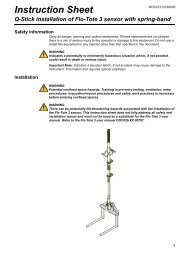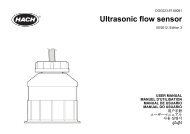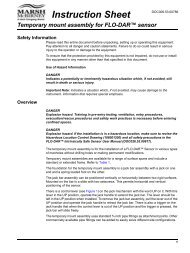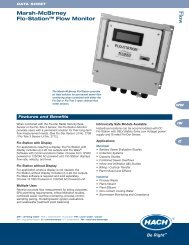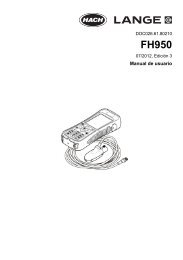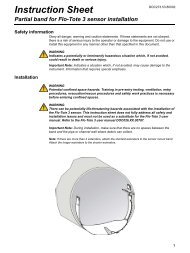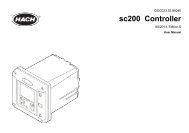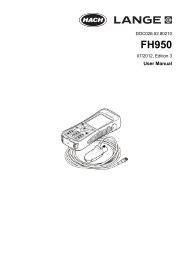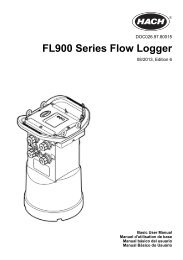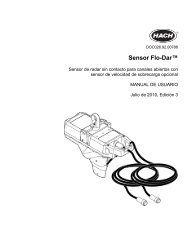You also want an ePaper? Increase the reach of your titles
YUMPU automatically turns print PDFs into web optimized ePapers that Google loves.
General informationFigure 1 System overview1 <strong>Flo</strong>-Dar sensor with optional surcharge velocity sensor 3 Mounting frame2 Logger or controller 4 Non-hazardous environment2.2.1 Theory of operationThe <strong>Flo</strong>-Dar <strong>Sensor</strong> is mounted above an open channel of water and measures thesurface velocity and depth from above the surface of the water. The two measurementsare used to calculate the flow rate.During surcharge (submerged) conditions, a pressure transducer measures depth. Theoptional surcharge velocity sensor (SVS) can be used to measure velocity duringsurcharge conditions.Surface velocity measurementThe surface velocity of the water is measured using radar technology. A radar beam istransmitted from the sensor to the water surface at the center of the channel. A portion ofthe signal is reflected back at a slightly different frequency. The difference in frequency,known as the Doppler frequency, is directly proportional to the speed of the flow.Proprietary algorithms are then used to calculate the average speed of the flow stream.Note: The radar velocity sensor does not operate under surcharge conditions.Velocity measurements during surchargeThe optional surcharge velocity sensor (SVS) is activated when the flow level rises towithin 7 inches of the sensor mounting frame and remains active until the flow falls to7 inches below the sensor mounting frame. The mounting frame is installed 5 to 6 inchesabove the crown of the pipe. This places the velocity-sensing electrodes at the correctlocation in the flow below the elevation of the crown of the pipe.The SVS measures velocity using an electromagnetic sensor that generates a magneticfield. When the water passes through the magnetic field, a voltage is generated that isdirectly proportional to the speed of the water passing the sensor.8



